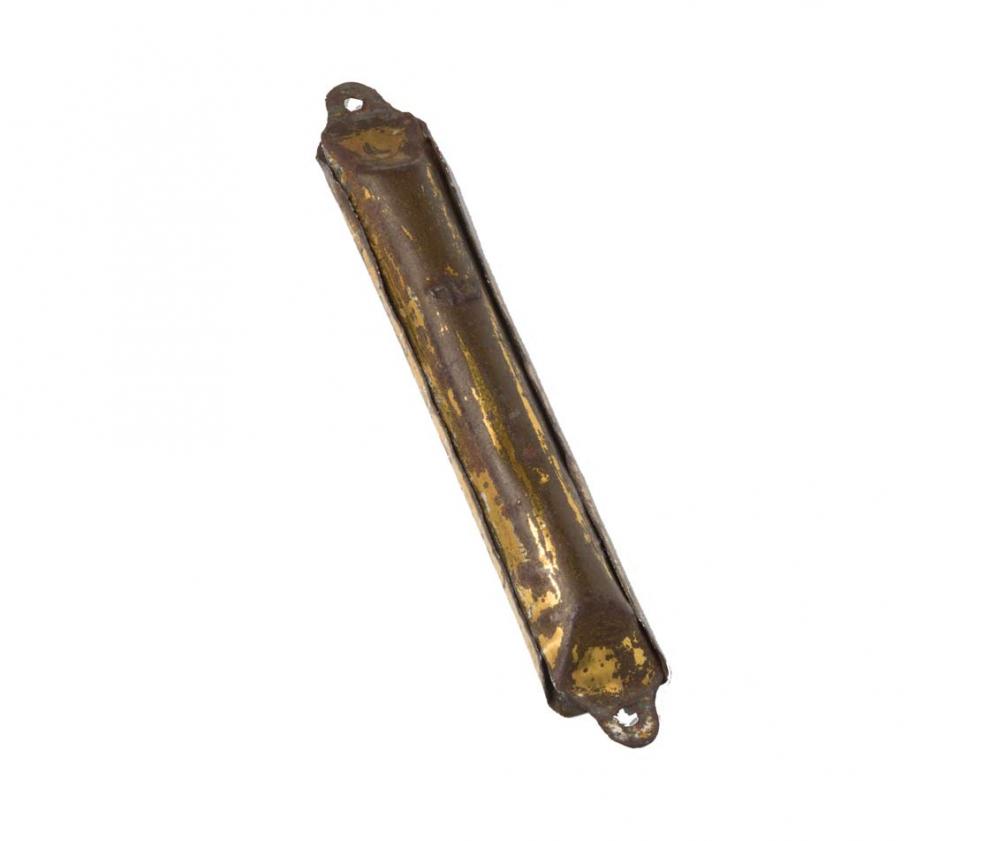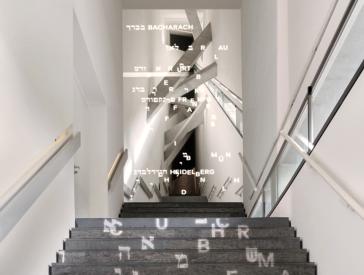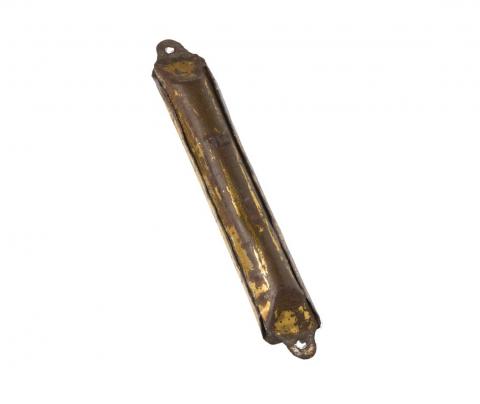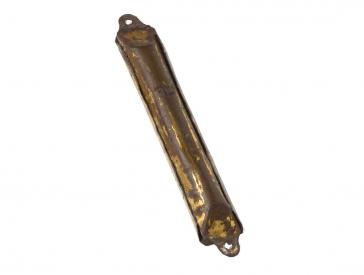Puzzle Pieces of the Past
Everything We Know So Far About a Mezuzah from Linienstrasse 141 in Berlin’s Mitte District
People frequently offer the Jewish Museum Berlin (JMB) objects for our collection. In many cases, the individuals contacting us are aware – or suspect, based on clues from family stories – that the items in their custody once belonged to Jewish families who were persecuted during the Nazi era. These objects were acquired at estate auctions, exchanged for food, kept for safekeeping as a favor to Jewish friends facing deportation, or discovered in apartments from which Jewish families had previously been deported. It is often precisely because of these problematic histories of acquisition, which sometimes weigh on their consciences, that the objects’ custodians reach out to the museum.
Although the JMB does not collect such objects systematically, we have accepted some of them in exceptional cases – as testaments to persecution, as part of the postwar reckoning with the Nazi past, or as memorials to those who were persecuted and murdered. Today, we work with the individuals who offered us the objects to identify the original owners and, if possible, locate any heirs in order to enable restitution. If this is not possible, we hold the objects for safekeeping – in the hope that further clues may someday emerge.
 X
X
Mezuzah from Linienstrasse 141, 1880–1940, metal, paper, ink; Jewish Museum Berlin, accession L-2025/2, photo: Roman März
A Mezuzah as a Childhood Treasure
One such object is the mezuzah from Linienstrasse 141, whose story we will to tell here. Simple in design, it likely came from a humble household. It was donated to the museum by a native Berliner. Until spring 1945, his family had lived at Linienstrasse 125. After their house was destroyed in an air raid, they were allocated a two-room apartment on the first floor of the building across the street – number 141. The apartment was unoccupied, but neighbors told them that a Jewish family had lived there before being deported in 1943 or 1944. The mezuzah was still attached to the doorframe.
What is the Mezuzah?
Mezuzah (Hebrew for door post), plural: mezuzot, a small capsule containing a parchment scroll with passages from the Torah; attached to the right door post, it offers symbolic protection
The man who approached us, then a young child, knew from his mother and neighbors that it was a Jewish ritual object. Out of curiosity, he took down the cylinder shortly after the war and opened it. For decades, he stored the mezuzah in a container together with other childhood keepsakes, until he eventually handed it over to the museum – in the hopes that it would not be forgotten.
Armed with this information, we began to search for the Jewish family who had lived in the apartment before their deportation.
Jewish Residents of Linienstrasse 141
Our research began with the database Mapping the Lives, which allows users to search for people persecuted under the Nazi regime based on their last known addresses. According to the 1939 census records, six individuals persecuted as Jews were living at Linienstrasse 141: the four members of the Dagowitsch/Dagowitz family and two boarders, the Klein sisters.
Ignatz Dagowitsch was born in 1888 in Yekaterinoslav (now Dnipro, Ukraine), and likely came to Berlin after the First World War. In 1926, he applied for a Nansen passport there – a travel document for stateless Russian refugees. In Berlin, he met Feige Freiberg, born in 1902 in Jaroslau (now Jarosław, Poland), who had moved to Berlin in 1919. The couple married in the 1920s, most likely in a solely religious ceremony; their marriage was not registered with civil authorities until 1936.
The Dagowitsches had two daughters: Susi Mary (born 1926) and Sulamith, also known as Schula (born 1936). Ignatz worked as a tailor, while Feige sold textiles at markets. They are listed at the adress Linienstrasse 141 in Berlin address books from 1931 onward, although they may have lived there as early as 1925. Feige’s sister Bertha also lived with them until she emigrated in 1933.
In late 1938 or early 1939, the sisters Fanny Klein (born 1885) and Johanna Breitenstein, née Klein (born 1883), moved in as boarders or lodgers. Both were born in the village of Altenwalde (today Liszkowo, Poland). Fanny worked as a clerk, Johanna as a housekeeper. A third sister of theirs, Dora, lived with her husband David Hirsch – also a tailor – nearby at Linienstrasse 130.
On 1 November 1941, all six of them – Ignatz, Feige, Susi, and Sulamith Dagowitsch, along with Fanny and Johanna Klein – were deported to Litzmannstadt. Index cards from Berlin’s tax authorities, digitized by the Arolsen Archives, confirm that they were still living at Linienstrasse 141 at the time. In May 1942, they were transferred to Kulmhof, where they were murdered.
Unanswered Questions
It remains unclear whether the Dagowitsch family’s apartment was in fact the same one that the Berlin donor’s family moved into after the war – where the mezuzah was found. After the war, Feige Dagowitsch’s siblings filed claims for restitution and compensation on behalf of Feige and Ignatz Dagowitsch. In her statement, Feige’s sister Bertha wrote:
“I came to Berlin around 1925 and lived with my sister at Linienstr. 141 until I was forced to emigrate in 1933. […] My brother-in-law was a tailor. He had his workshop in the apartment. My sister’s apartment was comfortably furnished and consisted of three rooms.”
Another relative of Feige’s, who emigrated in 1934, also remembered a three-room apartment:
“One room was the tailor’s workshop mentioned above, and the Dagowitsch family lived in the other two.”
Is it conceivable that the Dagowitsch family moved to a smaller apartment in the same building at the end of the 1930s? Or did the mezuzah belong to a different Jewish family who moved into the building after 1939?
To this day, we have not been able to determine exactly who originally put up the mezuzah. If you have information about the history of this building, or if you are a descendant of the Dagowitsch family, we kindly ask you to contact us. Every new detail helps us fit another piece into the puzzle of the past. In the meantime, we will continue to preserve the mezuzah with care – as a witness to lives cut short, and in the hope that one day it may be returned to the family to whom it once belonged.
Elisabeth Weber, Provenance Researcher at the JMB
Behind the Scenes: Provenance Research at the JMB (4)






